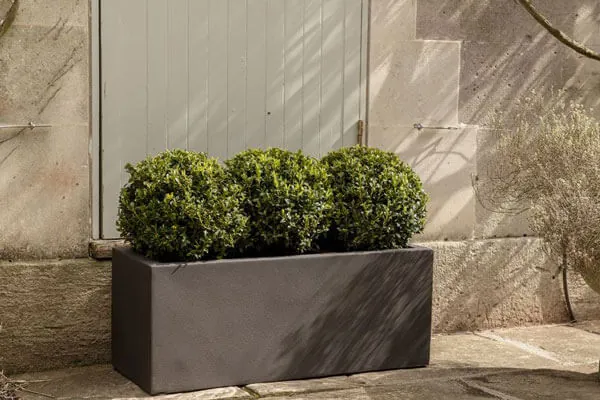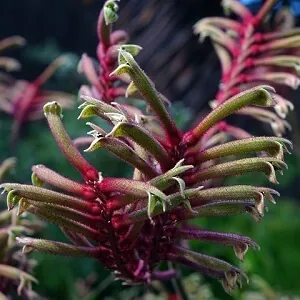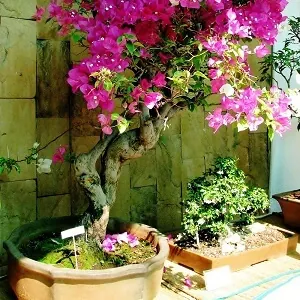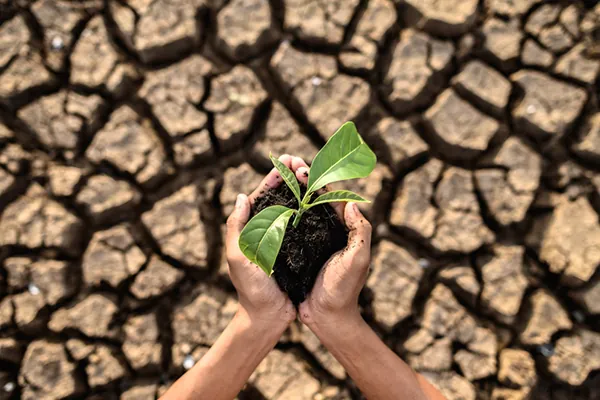Climate Change Affecting Landscaping Practices
Climate change has become an undeniable reality as it brings about significant challenges for gardening and landscaping professionals. As the climate continues to change, so must our approach to creating attractive and resilient outdoor spaces. Let us explore how climate change affects gardening practices and the crucial role that pots and planters play in adapting to these challenges.
Understanding Climate Challenges in Gardening
Effects of Climate Change on Plants and Soil
Climate change presents a multitude of challenges for both plants and soil. Increasingly extreme weather patterns, temperature fluctuations, and prolonged droughts are just a few of the impacts that gardeners and landscapers need to contend with.
Extreme Weather Events
Unpredictable storms, intense rainfall, and hail can harm delicate plants and disrupt carefully planned landscapes. These events can lead to soil erosion, plant damage, and even the loss of cherished green spaces.
Temperature Fluctuations
Rising global temperatures and erratic weather patterns can wreak havoc on plants that have adapted to specific climate conditions. Sudden temperature shifts, especially during the growing season, can stress plants and affect their growth.
Drought Conditions
Prolonged periods of drought are becoming more common, posing a significant threat to gardens and landscapes. Drought-stressed plants are more susceptible to diseases and pests, and they often require additional care and resources to survive.
Impact on Traditional Gardening Methods
Traditional gardening methods, such as planting directly in the ground, are not always well-suited to withstand these climate challenges. The unpredictability of weather patterns and the strain they place on plants and soil have prompted a need for more adaptive approaches to landscaping.
In response to these challenges, professionals in the field are increasingly turning to innovative solutions that not only address the effects of climate change but also offer opportunities for creativity and flexibility. Pots and planters, long regarded as essential tools in gardening, have emerged as versatile allies in the battle against climate change.
Advantages of Using Pots and Planters

Florence Trough Planter Box
Mobility
One of the key advantages of using pots and planters in your landscaping projects is their unparalleled mobility. In an era of unpredictable weather patterns, the ability to move plants at a moment’s notice is an advantage. Pots and planters allow you to optimize your plants’ exposure to sunlight and shade throughout the day, ensuring they receive the ideal amount of light for healthy growth. Additionally, when harsh weather, such as storms or frost, looms, you can easily relocate your plants to sheltered areas to safeguard them.
Soil Control
Traditional gardening in the ground can sometimes lead to challenges in controlling soil quality and moisture levels, which are crucial factors for plant health. Pots and planters offer a solution to this problem by granting you precise control over the composition and condition of the soil. This level of control is especially beneficial in regions with erratic weather conditions. You can tailor the soil mix to the specific needs of each plant, ensuring optimal growth and resilience in the face of changing climate conditions.
Water Conservation
Efficient water use is of paramount importance in sustainable gardening practices, and pots and planters play a significant role in water conservation. Water-efficient pots and self-watering planters have gained popularity for their ability to minimize water wastage. In addition, installing a drip irrigation system reduces the frequency of watering but also prevents water runoff, a critical concern in regions susceptible to droughts and water shortages.
Selecting the Right Pots and Planters for Climate Adaptation

Moscow GRC Trough Planter
Material Choices: Glass Reinforced Cement and Glass Reinforced Plastic
When choosing pots and planters for climate-adaptive gardening, material selection is paramount. Glass Reinforced Cement (GRC) and Glass Reinforced Plastic (GRP), also known as fiberglass, are two excellent options that combine durability with versatility. GRC pots are lightweight yet strong, making them easy to move while providing stability against strong winds. On the other hand, fiberglass planters are known for their resilience to extreme weather conditions, including frost and UV exposure, making them ideal for long-term outdoor use.
Size and Depth Considerations
Selecting the right size and depth for your pots and planters for climate adaptation is crucial for ensuring the health and vigor of your plants. Consider the specific requirements of the plants you’re working with, taking into account their root growth patterns and water retention needs. Smaller pots are suitable for compact plants with shallow roots, while larger containers are necessary for deep-rooted species. Adequate space for root growth and water storage will contribute to the overall adaptability and longevity of your garden.
Drainage Importance
Proper drainage is a non-negotiable element in maintaining healthy plants, particularly in areas with heavy rainfall. Adequate drainage prevents waterlogged soil, which can lead to root rot and other issues. When selecting pots and planters for climate adaptation, pay close attention to their drainage capabilities. Ensure that they come with built-in drainage holes and consider elevating them slightly above the ground to facilitate water flow. Regularly inspect and clean drainage channels to keep your plants thriving.
Plant Selection for Climate-Adaptive Gardening
Drought-Resistant Plants
Choosing drought-resistant plants is important for ensuring the longevity and vitality of your potted gardens, particularly in regions like Australia, where arid conditions can be prevalent. Drought-resistant plant options include:

Kangaroo Paw
- Kangaroo Paw (Anigozanthos spp.): This iconic Australian plant is well-known for its vibrant, tubular flowers and its ability to thrive in low-water conditions.
- Succulents: Varieties such as Echeveria, Aloe, and Crassula are excellent choices for their water-storing capabilities and adaptability to arid climates.
- Lavender (Lavandula spp.): Lavender not only adds fragrance to your garden but also handles dry conditions exceptionally well.
- Drought-Tolerant Native Grasses: Native grasses like Lomandra and Poa are well-suited for Australian climates and require minimal watering.
Heat-Tolerant Plants
With rising temperatures becoming a more common concern, choosing heat-tolerant plant varieties is essential. Ensure your potted gardens remain vibrant even during the hottest months. Considering options such as:

bougainvillea
- Agapanthus (Agapanthus spp.): These hardy perennials produce striking blue or white flowers and can withstand high temperatures.
- Grevillea: Many Grevillea species are native to Australia and are adapted to withstand extreme heat.
- Bougainvillea (Bougainvillea spp.): Known for their vibrant bracts, Bougainvillea plants thrive in the heat and can add a burst of color to your garden.
Seasonal Adjustments
Adapting to changing climate conditions also involves rotating plants seasonally. For instance, you can switch out heat-tolerant plants during the warmer months and replace them with drought-resistant varieties during the dry season. This dynamic approach ensures your potted gardens remain resilient and visually appealing throughout the year.
Adapting to Climate Change with the Pots and Planters
As climate change continues to challenge the way we approach gardening and landscaping, the role of pots and planters for climate adaptation has never been more crucial. These versatile tools empower professionals in the field to adapt, innovate, and create resilient outdoor spaces that can thrive in the face of evolving climate conditions.
Understanding the effects of climate change on plants and soil, and the limitations of traditional gardening methods, has led us to explore new horizons. Pots and planters offer mobility, precise soil control, and water conservation, making them indispensable allies in the quest for sustainable, climate-adaptive gardens and landscapes.
To embark on your journey towards climate-adaptive gardening, we invite you to explore our diverse and high-quality range of pots and planters.



